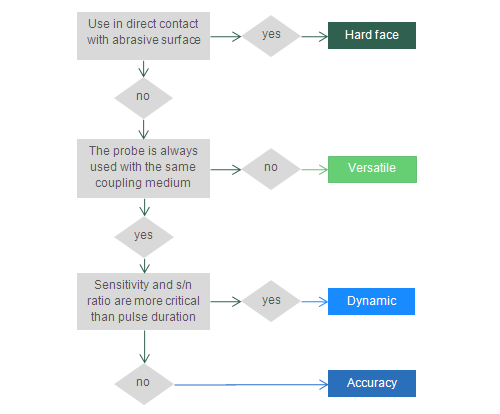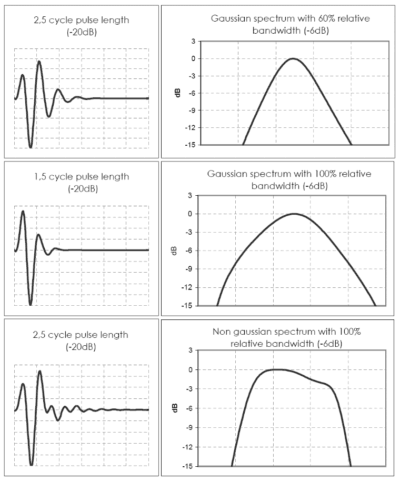Acoustic solutions for linear arrays
IMASONIC offers four types of standard acoustic designs for its linear array probes.
Versatile
The acoustic design is matched to the coupling medium (water, plexiglas, rexolite, etc.). The performances are slightly affected if the probe is used with another coupling medium. The design is optimized for both high sensitivity and damping in the range of 2.5 cycles (20dB) on average*. This technology has been proposed by Imasonic for several years.
Dynamic
The acoustic design is particularly optimized to gain about 6dB* sensitivity on average compared to versatile design, while keeping the same pulse length. This optimization is valid for the nominal coupling medium. When using the probe with other coupling media, performances degrade faster than the versatile technology
Accuracy
The acoustic design is particularly optimized to gain 0.5 to 1 cycle* in pulse duration on average compared to versatile design, while keeping the same sensitivity. This optimization is valid for the nominal coupling medium. When using the probe with other coupling media, performances degrade faster than the versatile technology
Hard face
The acoustic design is optimized to keep equivalent performance level than versatile design while implementing a front face 10 times* more wear resistant.
*The above mentioned values are indicative and may change depending on probes characteristics, particularly frequency, element size, acoustic matching, cable length,
How to choose ?

